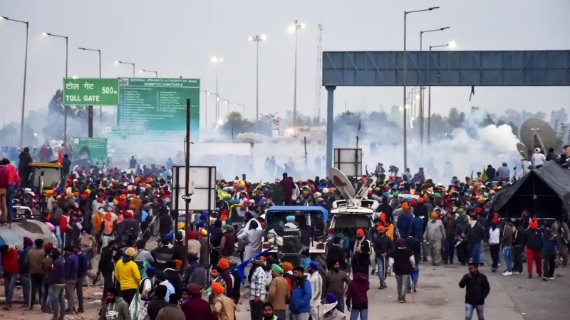
What are the tear smoke launchers mounted on drones that Haryana deployed against protesting farmers?
The UAVs produced by Drone Imaging and Information Service of Haryana Limited were initially employed to protect the international borders with Pakistan and Bangladesh.
For the first time, on Tuesday, the Haryana government employed drones to deter farmers attempting to breach barricades set up at the borders and proceed towards Delhi for a scheduled protest. At the Shambhu border, the paramilitary tear-smoke-unit (TSU) utilized drone-mounted tear smoke launchers to release multiple tear gas shells.
The UAVs developed by Drone Imaging and Information Service of Haryana Limited (DRIISHYA) were initially created with the purpose of securing the international borders with Pakistan and Bangladesh.
More about drone tear smoke launchers used by Haryana govt:
- The introduction of drone-mounted tear smoke launchers took place during the 42nd governing body meeting of the TSU within the Border Security Force (BSF) in 2022.
- Its initial testing occurred at a tear smoke unit (TSU) located in Tekanpur, Madhya Pradesh.
- Paramilitary forces primarily utilize these launchers for crowd control purposes.
- These drones, equipped with tear gas shells for aerial deployment, have a range of up to 400-500 meters.
- Unlike pump guns, which necessitate manual loading, these drones have the ability to deploy multiple grenades simultaneously.
- Regarding the tear gas launchers, the BSF previously stated that they “will serve as a potential force multiplier for the security forces engaged in law-and-order management.”
At the Shambhu border, the paramilitary forces formed the first line of defense, while the Haryana police acted as the secondary line of defense in case protesting farmers breached the multi-layer barricades.
Established in 1976 under the BSF, the TSU specializes in designing and manufacturing anti-riot tear smoke munitions for supply to both central and state police forces. The BSF’s main responsibilities include securing the Indian borders with Pakistan and Bangladesh, as well as participating in various internal security operations across the nation.

